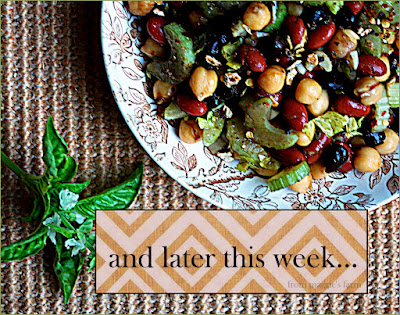notes from maggie's farm
Today, we're waking up in The Big Easy one the second day of our whirwind surprise road trip to celebrate our anniversary. We plan to make our way to the Roosevelt for the official cocktail of New Orleans, the Sazerac, which we visited with a post earlier this year. Cheers to you all, and looking forward to sharing our adventures upon our return home. Meanwhile, tip back a Sazerac with us?
One of the oldest known cocktails with it's origins in pre-civil war New Orleans, the Sazerac is the official cocktail of New Orleans.
Back in the early 1800's, Antoine Peychaud created the drink in a French Quarter bar and named it for his favorite French brandy, Sazerac-de-Forge et fils. In 1870, the drink was changed when American Rye whiskey was substituted for cognac, and a dash of absinthe was added by bartender Leon Lamothe, and today he is now regarded as the Father of the Sazerac. In 1912, absinthe was banned, so Peychaud substituted his special bitters in its place.
In 1893 the Grunewald Hotel was built in the city, and at this time the hotel earned the rights to Ramos Gin Fizz and the Sazerac. In 1965 the hotel was renamed the Fairmont Hotel.
Today, the Sazerac is best enjoyed in many of New Orleans' finest restaurants and bars, most notably the Sazerac Bar in the former Fairmont Hotel, reopened after Hurrican Katrina as The Roosevelt, Waldorf Astoria, where celebrities, locals, and tourists enjoy the drink.
"Set inside the Roosevelt, an historic landmark hotel, the Sazerac Bar gracefully embodies the grand history of drinking and socializing in New Orleans, only you'll find a younger generation of tipplers and savvy visitors appreciating the bar's list of classic cocktails. Restored WPA murals by Paul Ninas flank the curvaceous wood and tile room, and skilled bartenders pour the bar's namesake cocktail and Ramos Gin Fizzes with aplomb. (This is, afterall, the bar where the notorious governor of Louisiana, Earl K. Long, parked it for a sip of his favorite drink.) History and tradition are ingrained in the DNA of New Orleans, and spending an afternoon sipping a few at the Sazerac Bar at the Roosevelt is one tradition you don't want to miss". --Colleen Rush, food writer
Sazerac
Epicurious | February 2007
- 1 cube or 1/2 teaspoon sugar
- 4 dashes Peychaud Bitters
- Splash water, about 1/2 teaspoon
- 2 ounces rye whiskey
- Splash Herbsaint (or Pernod), about 1/2 teaspoon
- Lemon peel for garnish
- Ice
In old-fashioned glass, add ice and set aside. In another, combine sugar, bitters, and water. Muddle until sugar is completely dissolved. Add rye whiskey, fill with ice, and stir well, about 15 seconds. From first glass, discard ice, then add Herbsaint. Holding glass horizontally, turn it so that Herbsaint completely coats the interior. Discard any excess. Strain contents of second glass into chilled glass. Twist lemon peel directly over drink to release essential oils, and serve.
Read more about the storied history of the Roosevelt, and it's famous cocktail:
The Glory Days of the Roosevelt Hotel, Times-Picayune
The Roosevelt New Orleans Hotel, Wikipedia
The Sazerac Bar, 12 Bottle Bar
The Reopening of the Roosevelt New Orleans
And more favorite New Orleans-style cocktails from notes from maggie's farm:
The Cocktail Hour: How to Build a Bloody Mary Bar
Like a Hurricane
And tomorrow the Mardi Gras revelry continues with a rare treat for me. One that I rarely find away from the Deep South, and it's just been too long......Can't wait to share it with you.
The Roosevelt New Orleans Hotel, Wikipedia
The Sazerac Bar, 12 Bottle Bar
The Reopening of the Roosevelt New Orleans
And more favorite New Orleans-style cocktails from notes from maggie's farm:
The Cocktail Hour: How to Build a Bloody Mary Bar
Like a Hurricane
And tomorrow the Mardi Gras revelry continues with a rare treat for me. One that I rarely find away from the Deep South, and it's just been too long......Can't wait to share it with you.










































